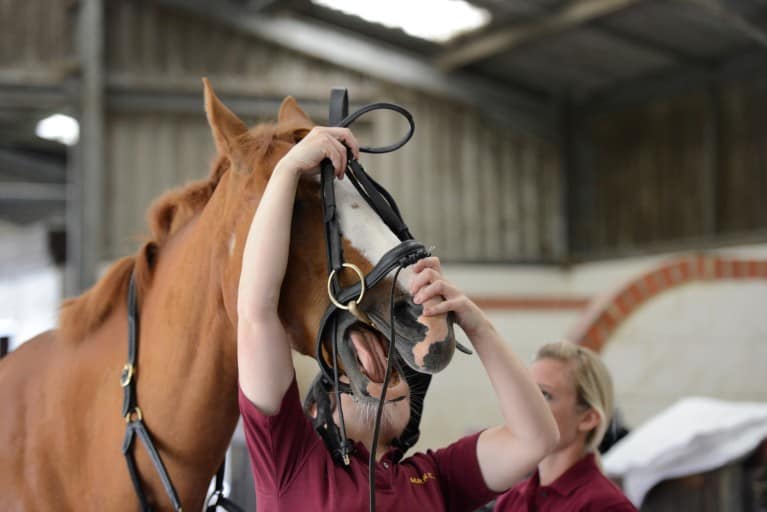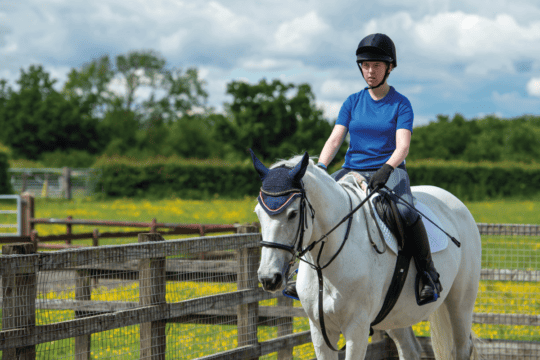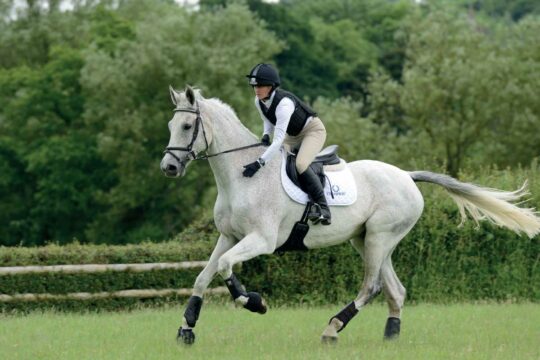Q: My unbroken, six-year-old mare has just been introduced to the bit. She isn’t particularly impressed with it. Would you recommend a bit for youngsters?

Liz McGoun answers:
First and foremost – and just as a precautionary measure – have her teeth and mouth checked by a veterinary surgeon, or qualified equine dentist.
Then, if everything is fine, I’d start with a Nathe or Happy Mouth straight bar on loose rings. Attach it to a simple headpiece with no browband or noseband, so there is nothing to have to fiddle with. Even smother the bit with honey or molasses, to give her something pleasant to suck on!
Try doing some ‘mouth-work’ to familiarise her with having her mouth handled, but do take care in case she objects.
Start working on the muzzle, lips and nostrils, gently massaging and rolling the loose skin and flesh between your fingers.
Once she is happy to accept this, wet your hands, then try to rub gently around her upper and lower gums, progressing to rubbing along the bars.
Do not, however, try to achieve all this in one session – spend about 10 minutes a day, gradually desensitising her.
Open wide!
If possible, do this in an enclosed place with her wearing a headcollar, but not tied up. When she is relaxed having her mouth handled, calmly teach her to open her mouth.
Using your left hand, insert your thumb over the bars and press the tongue lightly. At the same time, use your other hand to gently restrain her nose. Accompany the physical request with a voice command of your choice.
The important point is to ensure she doesn’t panic when you restrain her. Then, once she’s relaxed, introduce the Nathe or Happy Mouth bit, ensuring there are no hazards she could catch the bit on if she rubs. Provided that she is not panicking, leave her for 10 to 15 minutes to play with the bit.
Continue with a non-metal mouthpiece until she is bitted, accepting and giving to pressure on the mouth applied through the bit. If she works well in it, there is no real reason to change. There are many varieties of single and double-jointed, non-metal bits on the market.















